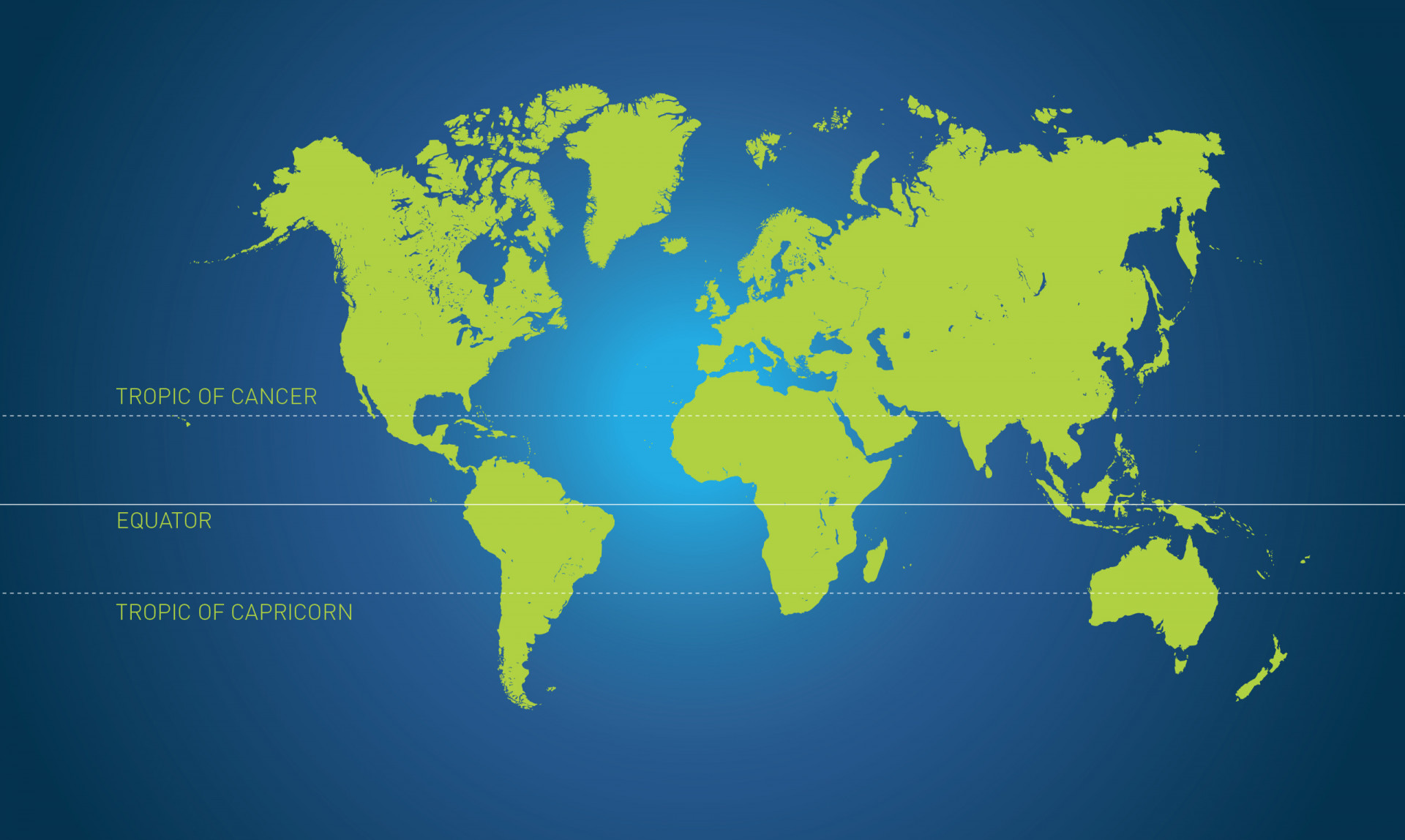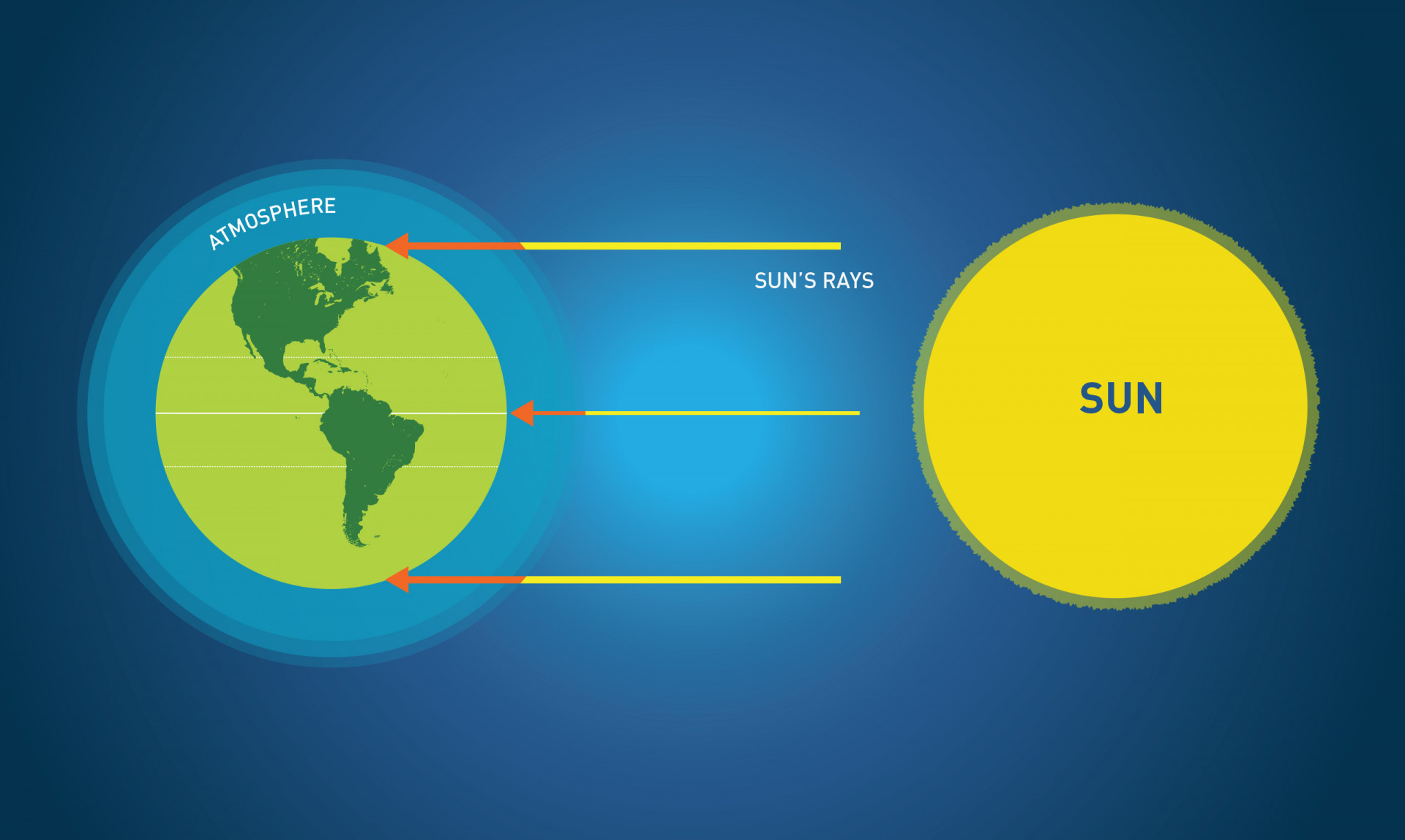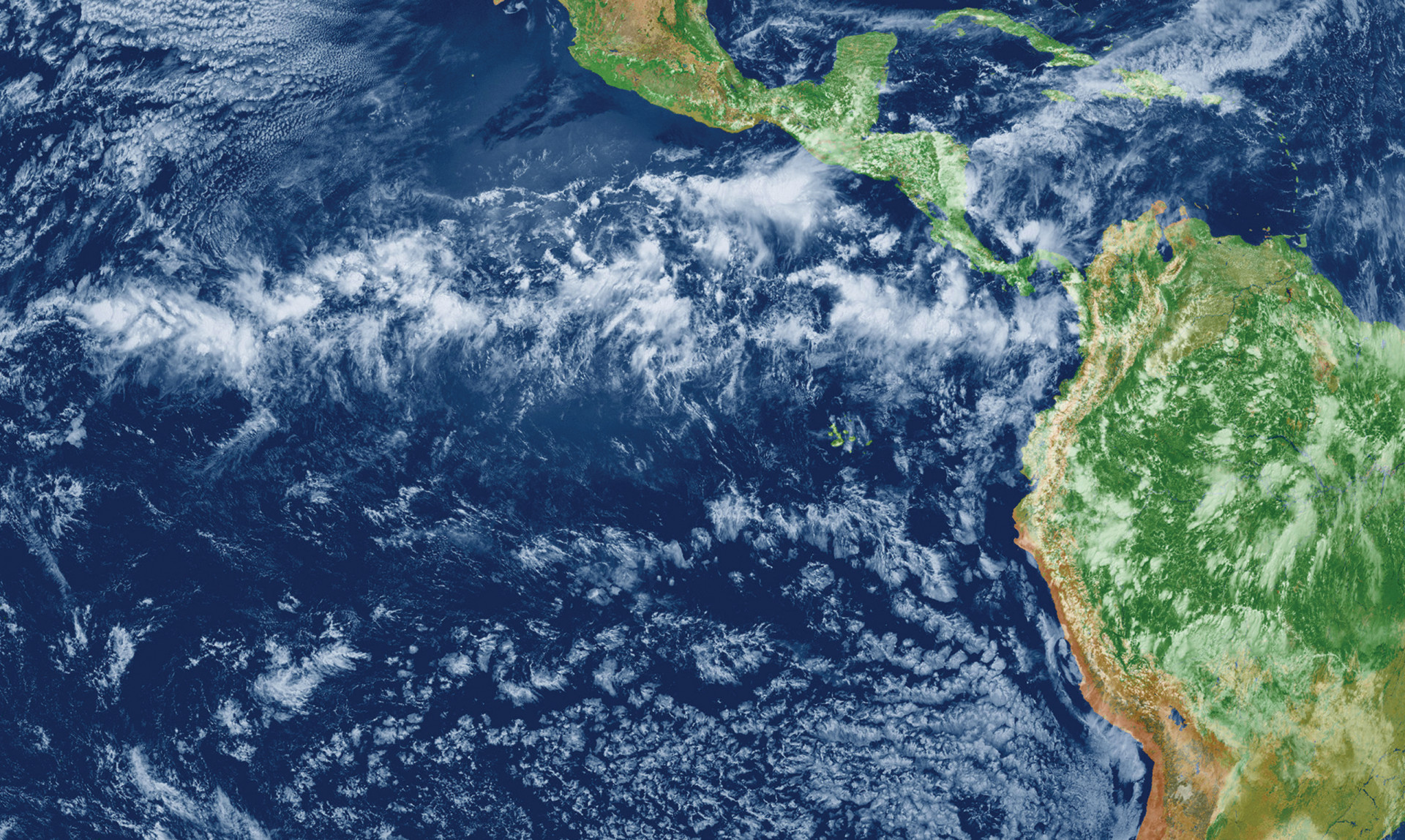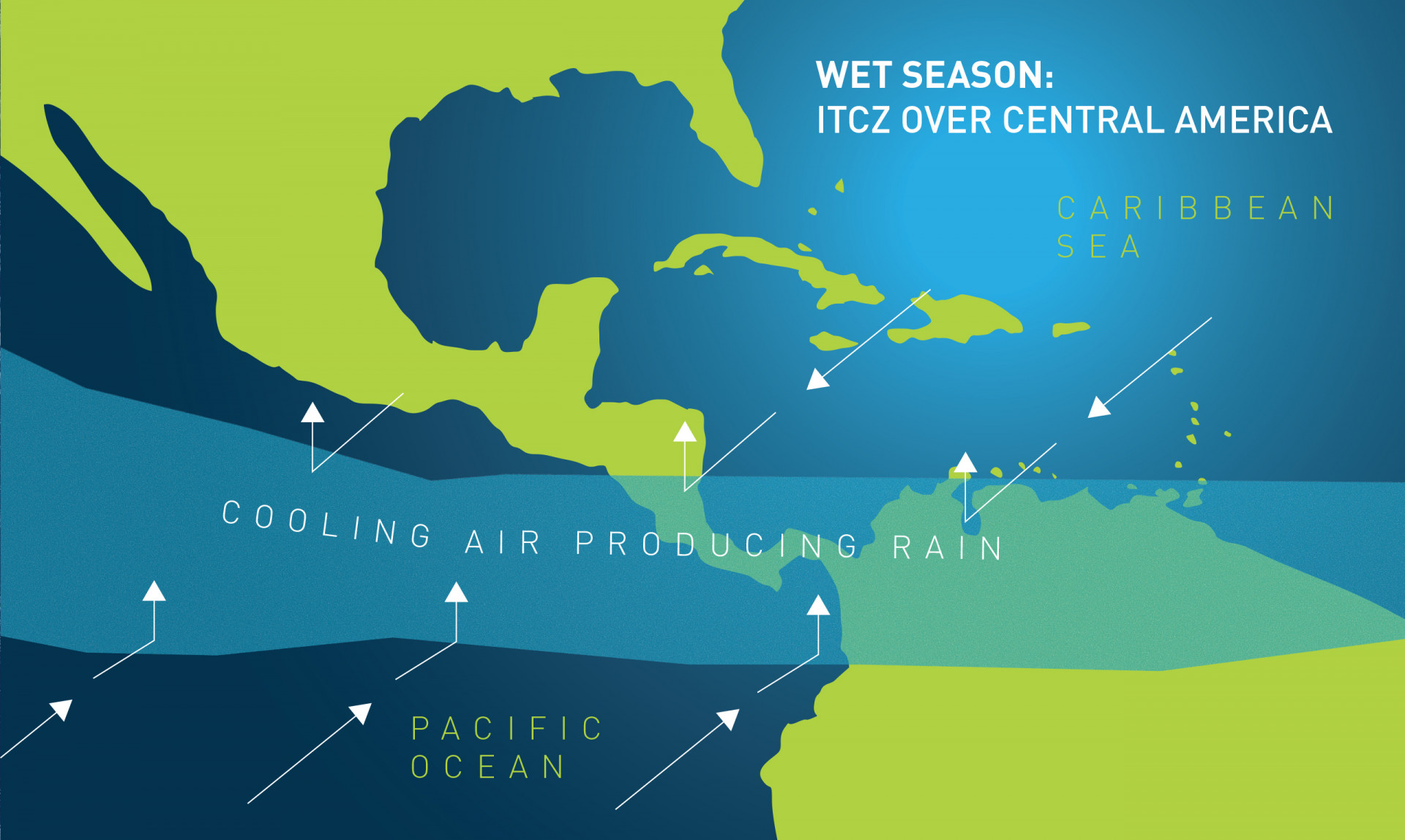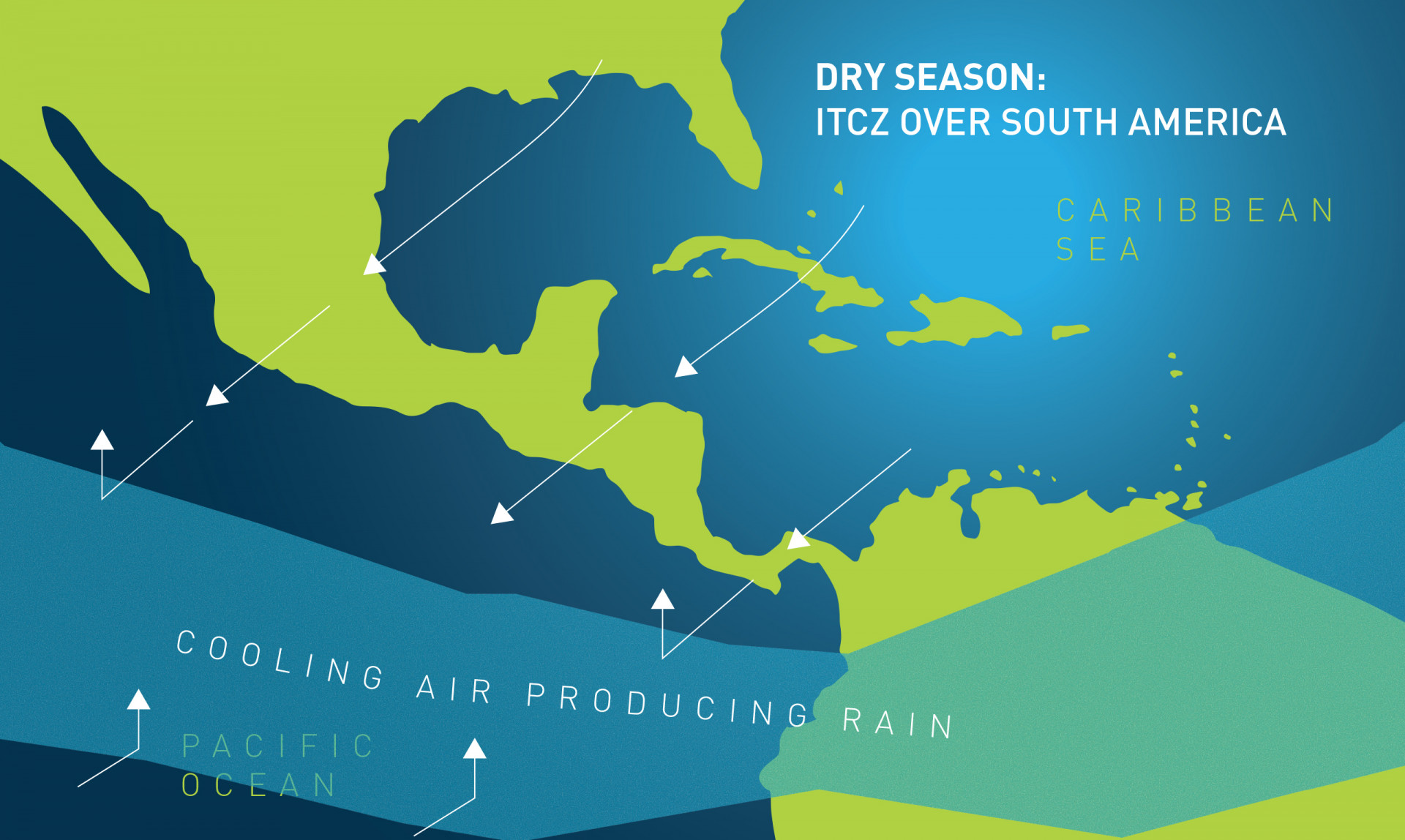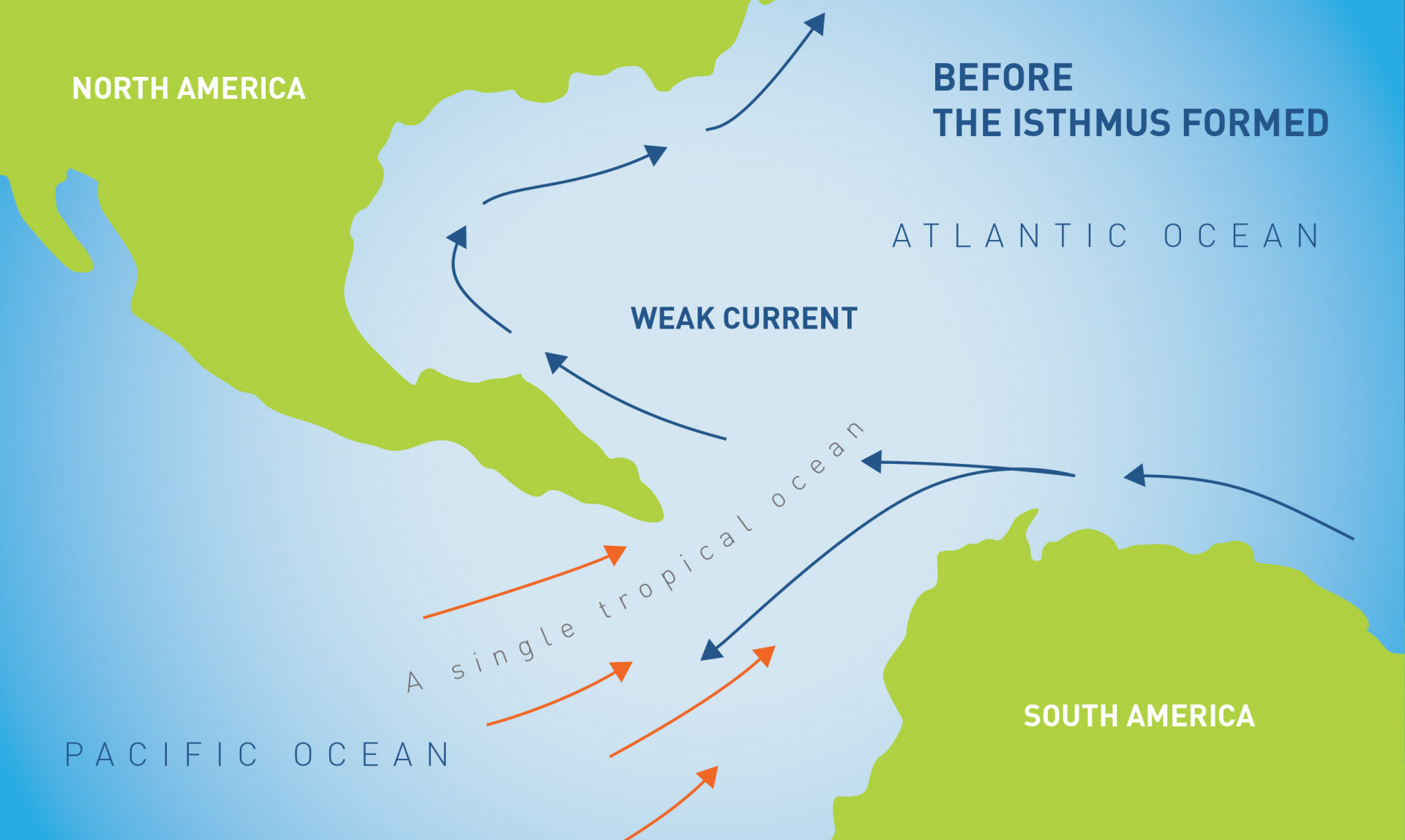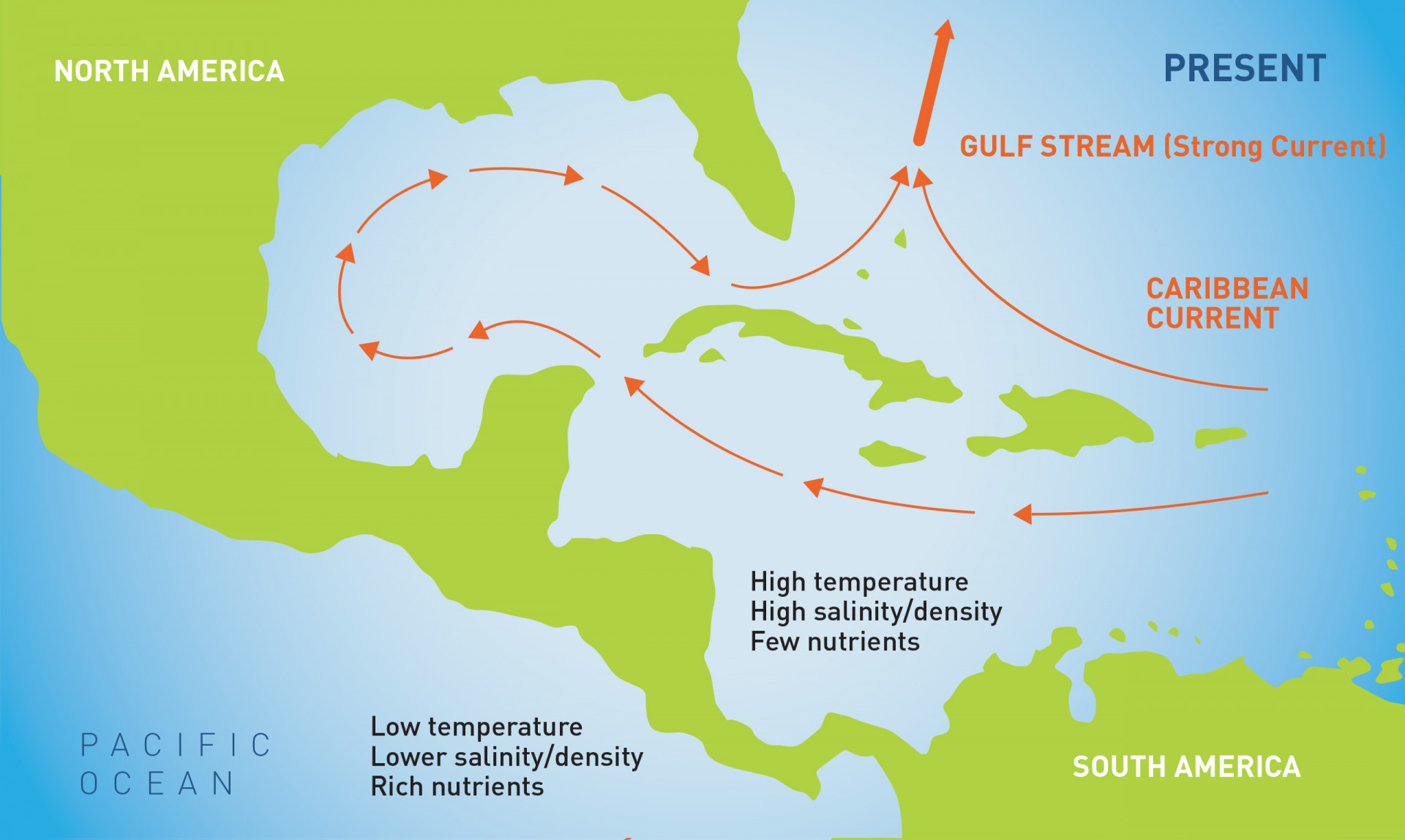Smithsonian biologists were invited to Panama in 1910 during the construction of the Panama Canal. Their surveys of Panama’s flora and fauna were the first steps toward creating a world-class platform for research in the tropics. As a narrow land bridge that separates two oceans and connects the biodiversity of two continents, Panama’s rich ecosystems promises to keep researchers busy for another hundred years.
What are the Tropics?
The tropics are a narrow band around Earth’s equator and come from the word tropikos, which means “turning” in Greek. Within these latitudinal borders the sun is directly overhead at given points in a year. Hence the sun “turns” south when it reaches the Tropic of Cancer during the summer solstice and “turns” north when it reaches the Tropic of Capricorn during the winter solstice.
Why are the Tropics Important?
The tropics are home to the vast majority of animals, plants and fungi on the planet. This is at least partly due to the constant supply of sun energy delivered to the tropics, which is used by plants to convert carbon dioxide to carbohydrates — the basic food source for everything from bacteria to humans. Diversity is not only higher in the tropics but is often more densely packed. There are more species of birds and plants in Panama — a country the size of South Carolina — than there are in all of Canada and the United States combined.
The tropics are furthermore characterized by complex biological interactions punctuated by cooperation and intense competition. Groups of species are sometimes so closely co-evolved that they depend on one another for survival — such is the case with coral and the photosynthetic algae that lives it in their tissue, or fig trees and the wasps that pollinate them. The tropics have a staggering diversity of species but are home to some of the least-known ecosystems on the planet.
The 1910 Panama Biological Survey
The presence of the Smithsonian in Panama is closely tied to the construction of the Panama Canal between 1903 and 1914. While this feat of engineering would create an artificial freshwater lake that ships would use to travel between the Pacific and Atlantic oceans, it would also permanently impact the land bridge that connected North and South America.
Smithsonian scientists and naturalists across the United States urged U.S. President Theodore Roosevelt to support a biological expedition to take an inventory of the future Canal Zone’s flora and fauna before the canal would forever alter the landscape. Funded by his successor William Taft, the biological survey would become known as one of the world’s first environmental impact studies, and was extended to all of Panama at the invitation of Panama’s President Pablo Arosemena.
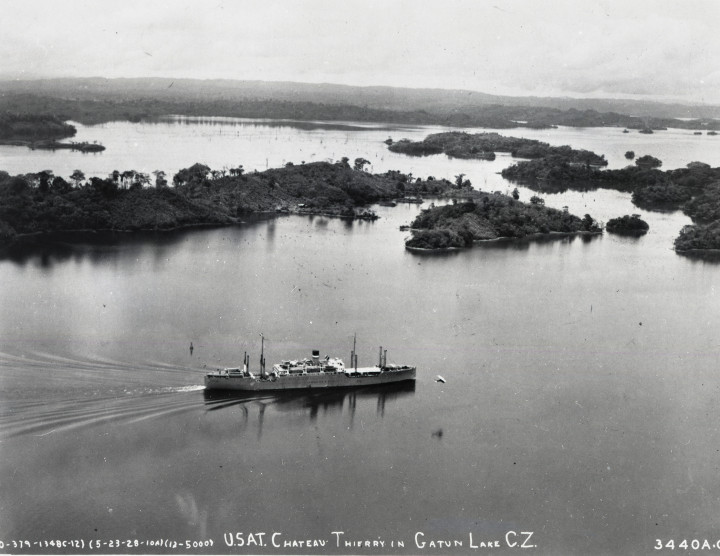
A ship crosses the Gatún Lake portion of the Panama Canal in 1928.
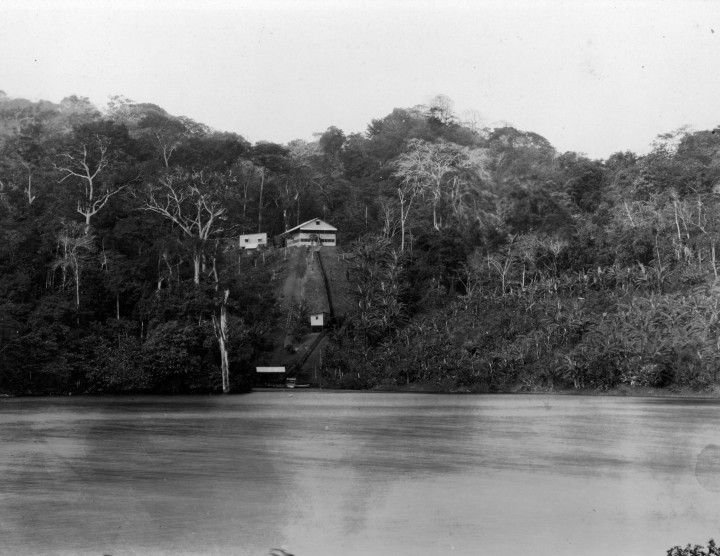
Established in 1923, STRI’s first field station stood in a small clearing on Barro Colorado Island, which was formed by the filling of the main Panama Canal reservoir a decade earlier.
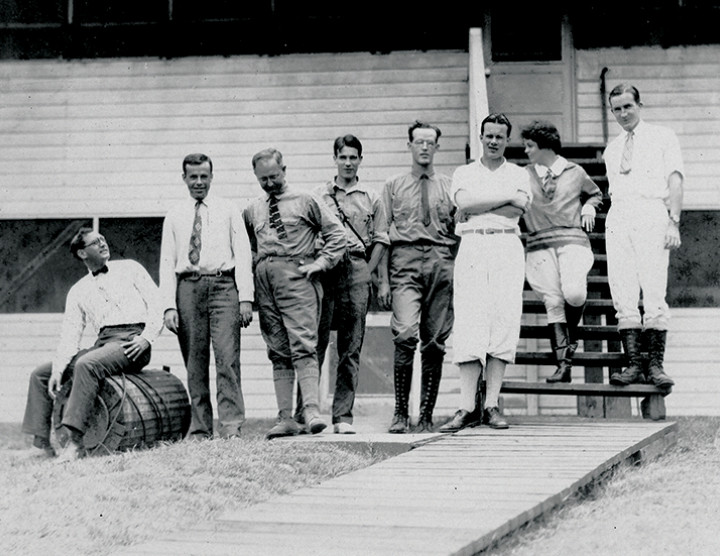
Some of the first visitors to the Barro Colorado Island research station, circa 1924.
Panama Changed the World
The rise of the Isthmus of Panama, which concluded about three million years ago, had impacts that were felt across the globe. On land, it sparked the Great American Biotic Interchange as species of animals and plants migrated between North and South America across the newly formed land bridge. In dividing an ocean into two, the isthmus created the Caribbean and Eastern Tropical Pacific, which would go on to create two vastly different marine ecosystems, creating a perfect experiment in evolution to learn how organisms in deep time changed with their climate. In changing ocean currents, the closure of the Isthmus of Panama changed the global climate and perhaps influenced an ice age and the evolution of humans in Africa.
Panama: Its People and Culture
Panama is the southernmost country of Central America and is home to some 3.8 million people. The country has been an international crossroads since Europeans discovered that Panama was the quickest route between the Atlantic and Pacific. The Spanish dreamed of building the Panama Canal some 500 years ago, and, after a failed attempt led by the French in the late 1800s, the United States led its completion in 1914. Panama’s modern political and cultural history is more associated with South American than Central America, but partly because Panama has no over-land route connecting it to Colombia, the country has largely forged a cultural and political identity separate from South America as well. Panama’s earliest known inhabitants built complex societies of hunters and farmers, and Panama’s numerous indigenous groups today account for more than 10 percent of the country’s population, with the larger groups administering their own semi-autonomous territories.
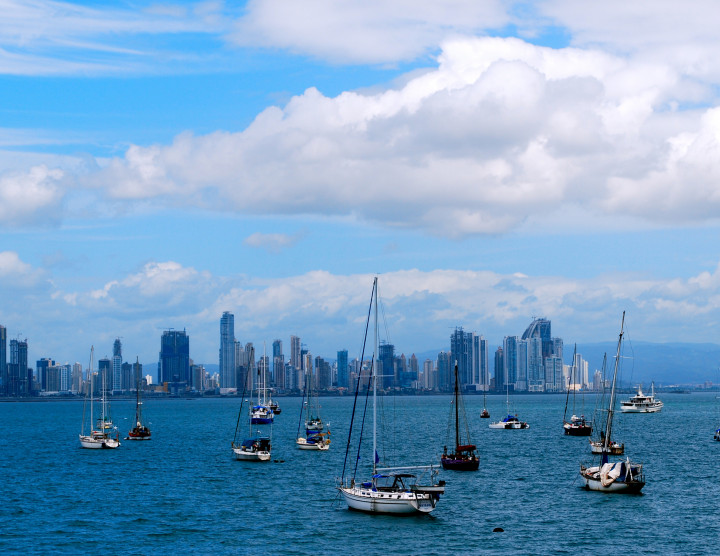
A view of the Bay of Panama and the Panama City skyline.
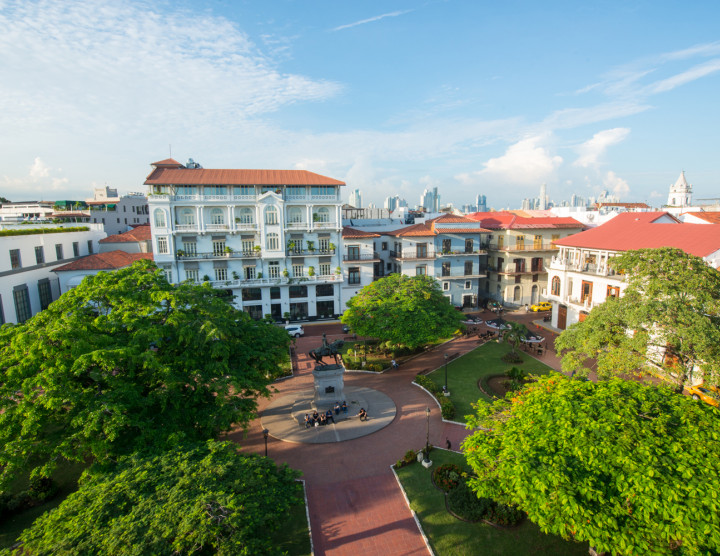
Plaza Herrera in Panama City’s old quarter, Casco Viejo.
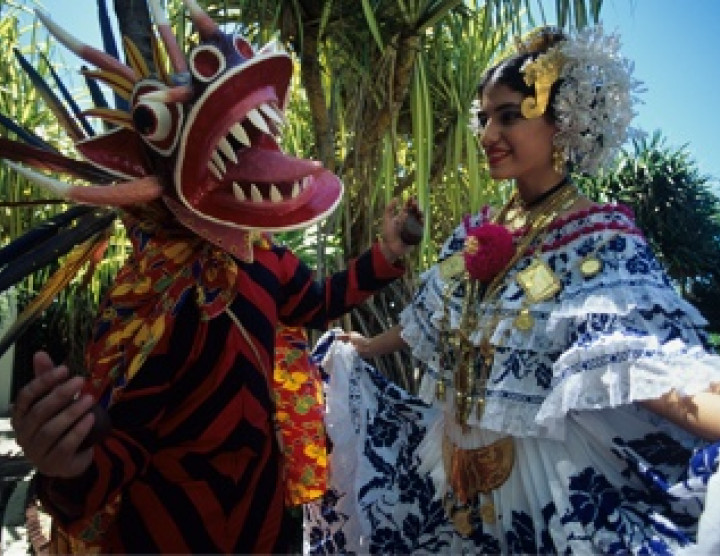
A diablico dancer and a woman in a pollera, Panama’s national dress.





